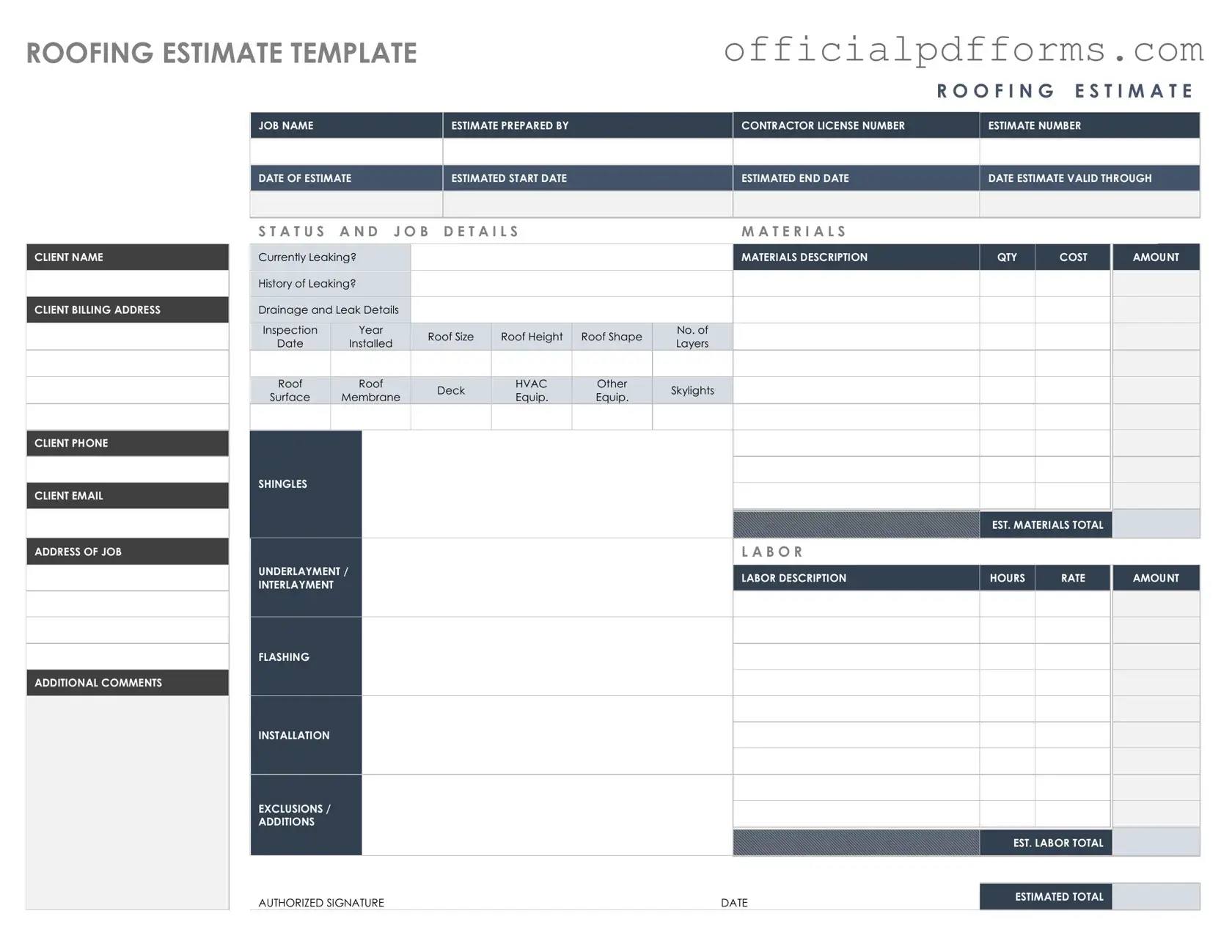A Roofing Estimate form is a document that outlines the anticipated costs and scope of work for a roofing project. This form is typically used by homeowners or property managers to gather quotes from roofing contractors. It helps in comparing prices, services, and timelines before making a decision.
Using a Roofing Estimate form is essential for several reasons:
-
It provides a clear breakdown of costs, helping you budget effectively.
-
You can compare multiple estimates to find the best value for your project.
-
The form outlines the specific work to be done, minimizing misunderstandings with contractors.
-
It can serve as a reference point for any future disputes or clarifications.
Filling out a Roofing Estimate form typically involves the following steps:
-
Provide your contact information, including your name, address, and phone number.
-
Describe the roofing project, including the type of roofing material you prefer.
-
Specify the size of the area to be roofed, usually measured in square feet.
-
Indicate any specific concerns, such as leaks or structural issues.
-
Include a timeline for when you would like the work to be completed.
How long does it take to receive a roofing estimate?
The time it takes to receive a roofing estimate can vary. Generally, contractors may provide an estimate within a few days to a week after assessing your property. Factors that can influence this timeframe include the contractor's workload, the complexity of the project, and weather conditions that may affect inspections.
When requesting estimates, provide as much relevant information as possible. This includes:
-
Your contact details
-
Type of roofing material desired
-
Size and pitch of the roof
-
Any existing damage or issues
-
Preferred start date and project timeline
Can I negotiate the estimate provided by a contractor?
Yes, negotiating the estimate is common and often encouraged. If you receive multiple estimates, you can use them as leverage to discuss pricing with your preferred contractor. Be respectful and clear about your budget while remaining open to suggestions from the contractor.
What factors can affect the roofing estimate?
Several factors can influence the final roofing estimate, including:
-
The type of roofing material selected
-
The size and complexity of the roof
-
Labor costs in your area
-
Accessibility of the roof
-
Any necessary repairs to the underlying structure
Is a roofing estimate legally binding?
A roofing estimate is generally not legally binding. It serves as an initial quote for the work to be done. However, once you and the contractor agree on the terms and sign a contract, that document becomes binding. Always review the contract carefully before signing to ensure all details match your expectations.
What should I do if I have questions about the estimate?
If you have questions about the roofing estimate, reach out to the contractor directly. They should be willing to explain any unclear aspects, such as pricing or specific services included. Open communication can help clarify your concerns and ensure you are comfortable with the proposed work.
